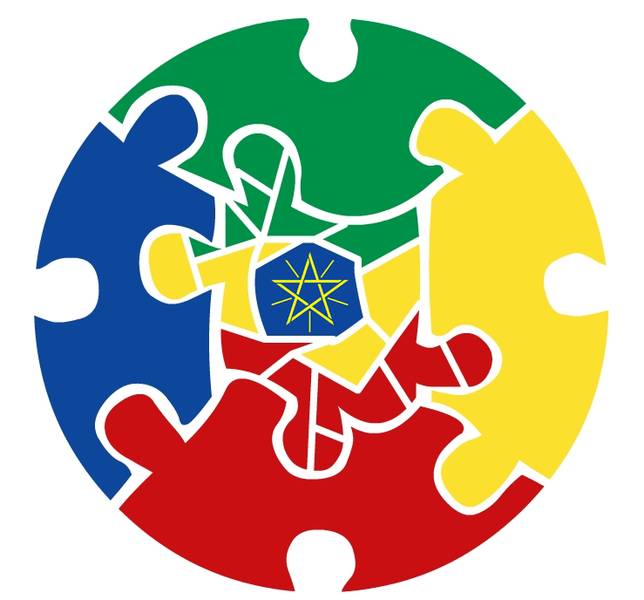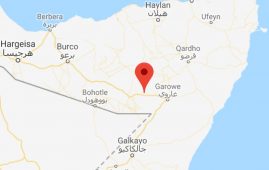Tripartite & IGAD Infrastructure Investment Conference, 28th -29th September 2011, Nairobi, Kenya
Outcomes, Conclusions & Way Forward
1. Background
1.1. As part of the efforts to fully establish the African Economic Community, the Heads of State and Government of three Regional Economic Communities, with the support of other Regional Integration Organisations, formed the COMESA-EAC-SADC Tripartite. The Tripartite held its first Summit in October 2008 in Kampala, Uganda and took a number of decisions that aim to deepen regional integration and economic development in the sub regions. These decisions included the harmonisation of infrastructure master plans and the improvement of transport logistics through improving transport infrastructure and trade facilitation measures along the corridors as well as the development of joint financing and implementation mechanisms for infrastructure development.
1.2. In addressing the logistics and infrastructure challenges as directed by the First Tripartite Summit in 2008, the Tripartite developed an innovative Aid for Trade Pilot Programme on the North South Corridor to address infrastructure and facilitation issues together and the corridor as a single network and successfully launched it at the Lusaka High Level Conference in 2009. The successful pilot programme has enabled the Regional Economic Communities, their Member States and the International Community to implement an economic corridor-based programme aimed at reducing the costs of cross-border trade in the Eastern and Southern Africa (ESA) region.
1.3. The high level Tripartite and IGAD Infrastructure Investment Conference (TIIC) based on the above success aims to extend this programme to the key transport corridors in ESA region: focusing on the Northern and Central Corridors in East Africa, and the Lamu and Djibouti Corridors in the Horn of Africa, in addition to regional energy transmission interconnectors. These corridor networks and power interconnectors will now also be targeted by the Tripartite and IGAD for significant improvements from 2011-2016 in surface transport, logistics and energy connectivity. These projects will underpin the implementation of the grand Tripartite Free Trade Area that was launched by the Second Tripartite Summit in Johannesburg, South Africa in June 2011.
1.4. The Tripartite and IGAD Corridor Programme (TICP) is based on the directives of the Heads of States during the North South Corridor Conference held in Lusaka, Zambia in April 2009 on the development of other corridors under the Aid for Trade Programme. This directive was underscored by the COMESA-EAC-SADC Tripartite Summit held in Johannesburg, South Africa in June 2011, which called on the Member States to fully participate at and the donors to support the Conference.
1.5. The Tripartite and IGAD Corridor Programme (TICP) developed by the Tripartite and IGAD – seeks to make the ESA region more competitive by reducing the high costs of transport, trade and energy, thereby creating higher levels of economic growth, employment creation and poverty reduction. The efforts will focus on prioritising actions that ensure that efficient transport and energy supply is assured for the region to support the growing demand from industrial, commercial and domestic consumers.
1.6. The high level Tripartite & IGAD Conference on Infrastructure Investment held in Nairobi (Kenya) on 28-29 September 2011 allowed the Chairpersons of COMESA, EAC, SADC and IGAD Authorities to outline the critical underpinnings for rolling out the various projects and programmes that constitute the Tripartite and IGAD Corridor Aid for Trade Programme. The Conference also allowed the RECs and Member States to outline the bottlenecks to trade and infrastructure development which need to be removed in a sequential manner, if trade costs are to be reduced, and key priority projects were highlighted for development partners and private sector investors to support. Given the growth in regional trade volumes and existing constraints on capacity and transit efficiency, addressing infrastructure, regulation and trade facilitation bottlenecks is an urgent priority for all.
2. Outcomes & Conclusions of the High Level Conference
The High Level Conference:
2.1. Agreed that the Tripartite had made good progress on the North-South Corridor Pilot Programme in particular the establishment of the necessary institutional and financing arrangements for the implementation of priority projects in the Programme and reaffirmed support for the corridor approach.
2.2. Recognised the magnitude of the long-term challenge facing the region’s transport infrastructure. Traffic volumes are expected to increase substantially on the Northern, Central, Lamu and Djibouti Corridors – for example, increasing 8 times over two decades on the Central Corridor. The East and Horn of Africa Region must both expand the carrying capacity of the region’s transport infrastructure and improve the logistics efficiency of the network, or risk retarding economic growth in the region. Moreover, the Conference noted the critical role of the region’s transport networks as key arteries to support the development of agriculture in the region (the most important economic sector employing around 60% of the region’s people) and thereby enhancing food security.
2.3. Appreciated the high level political commitment and support for the implementation of the priority projects under the Tripartite and IGAD Corridors and energy sectors. Support at all levels of government – regional, national and often sub-national – is critical for the coordinated development and efficiency of the region’s transport and energy networks.
2.4. Generated strong support for the Tripartite and IGAD Corridor Programme, targeting infrastructure and trade facilitation investment into the East and Horn of Africa corridors highlighted at the conference. Development partners and the private sector agreed to prioritise actions aimed at supporting the Corridors Programme, and are already investing U$8.7 billion in terms of committed and pipeline projects, with the potential for $2.5 billion in identified private sector investment projects. The Conference recognised the urgency and importance of immediate action given projected trade and economic growth in the region will overwhelm current Northern and Central Corridor infrastructure within five years if action is not taken.
2.4. Underscored the importance of private sector participation in investing and bridging the gap in the development of the region’s transport and energy infrastructure. In order for this to happen, the Conference agreed that concrete reforms to enable the implementation of public-private partnerships, regional procurement legislation, and the capital markets development must be prioritised and be in place by 2013.
2.5. Given corridor capacity, efficiency and financing constraints presented at the Conference, agreed that Member States should affirm commitment to the identified infrastructure projects and trade facilitation reform programmes by among others providing counterpart funding and implementing and harmonising supporting policies and regulations to trigger additional and sustained funding from the private sector and development partners.
2.6. Agreed on the need to create an efficient and effective energy trading market across the region to address shortages and access to power a challenge that is inhibiting growth and development in the region. The Tripartite in collaboration with the Eastern and the Southern Africa Power Pool and the respective States will spearhead, with support from development partners and the private sector, regional interconnectivity projects and put in place necessary market and regulatory systems to enable efficient energy to flow in the region under new market dynamics.
2.7. Underscored the need for Member States to be supported to mobilise greater resources for rapid realisation of pre-investment preparations for infrastructure projects.
2.8 Agreed to support the current Tripartite institutional arrangements to programme and manage the Tripartite and IGAD Corridor Programme. With the foundation of the Tripartite Project Preparation and Implementation Unit, and support from sub-regional partners, Tripartite implementation arrangements will be strengthened further in order for them have enhanced capacity to support the additional Tripartite and IGAD programmes. The Tripartite will focus on enhanced ways in which the private sector can come on board and complement public sector investment and financing for implementation of infrastructure projects.
3. Way Forward
3.1. Cognisant that the overall objective of the high level Tripartite and IGAD Infrastructure Investment Conference is to:
a. Implement the Tripartite and IGAD Corridor Programme (TICP);
b. Promote wider experience sharing and harmonisation of approaches to infrastructure development across Eastern andSouthern Africa;
c. From a regional perspective, strengthen the alignment and harmonisation of programmes and procedures for participation of external development partners and the private sector, as well as deepen the regional integration process through the Tripartite, IGAD and the Africa Union in general.
3.2. The following mechanisms shall be put in place to realise the agreed objectives:
a) Institutional Framework: the Tripartite Infrastructure Project Steering Committee established for the North-South Corridor pilot programme will be extended to oversee the overall implementation of the Tripartite and IGAD Corridor Programme. In addition, the Tripartite Project Preparation and Implementation Unit (PPIU) will be responsible, working with sub-regional core Tripartite partners, for facilitating, co-ordinating and monitoring progress of implementing projects and programmes. The clearly defined functions of the Tripartite Infrastructure Project Steering Committee will apply and detailed work plans will lay out implementation each year from 2011-2016 as the initial phase;
b) Harmonisation and Implementation of Policies and Regulations: Most infrastructure projects are implemented at the national level. However co-ordination and support at the regional level is critical for many projects, particularly cross-border or multi-country projects. In addition, regional harmonisation of regulatory policies is necessary to ensure optimal use of multi-country networks such as transport corridors and energy transmission networks. Regional harmonisation is also important in improving the enabling environment for infrastructure development, e.g. through regional procurement policies or public-private partnership policies. Infrastructure is only part of the challenge, as regional trade facilitation measures are critical in making infrastructure investments yield their expected benefits. From a trade facilitation perspective, there is need to harmonise regulations such as standards and non-tariff barriers elimination regimes, public-private partnership legislation and frameworks, customs and immigration procedures, transit and transport policies and procedures, vehicle overload control procedures, customs bonds, etc. Where policies and regulations differ between Regional Economic Communities (RECs), Member States commit to work intensively with the RECs to forge the harmonisation.
c) Tripartite Funding & Project Preparation Modalities – The Tripartite and IGAD Programme will utilise the existing Tripartite Trust Account where appropriate and relevant, and also work with other financial modalities for project preparation through the PPIU and other facilities where appropriate. Increased resources for project preparation will need to be mobilised. These modalities will ensure it is able to accept funding from development partners that can be used to finance identified projects and programmes needed to make the transport corridors in Eastern Africa more efficient.
3.3 End Note – The Conference was highly successful in articulating the priority projects for the Northern, Central, Lamu and Djibouti Corridors and the Power Transmission interconnectors. The investors and other development partners expressed satisfaction with the deliberations and the outcomes of the Conference.
The Tripartite expressed its singular appreciation to His Excellency President Mwai Kibaki for the gracious hosting of the Conference and the People of Kenya for their warm hospitality and friendship; the representatives of the Member States Government and their delegations; the Development Partners and the investors who supported the hosting of the Conference and committed resources to the development of infrastructure in the region and all the participants for making this Conference a great success.
**************************
Explanatory Notes:
The Tripartite is an umbrella organization of three of Africa’s Regional Economic Communities (REC’s), namely: the East Africa Community (EAC), the Common Market for Eastern and Southern Africa (COMESA) and the Southern African Development Community (SADC).
The Tripartite was established in 2005. The Tripartite Task Force, headed by the Secretary Generals of COMESA and the EAC, and the Executive Secretary of SADC, has met at least twice per year since 2006. The main focus of deliberations has been the harmonisation of REC programmes in the areas of trade and infrastructure development. In 2007 the Tripartite Task Force recommended that a Tripartite Summit of Heads of State and the Government of COMESA, EAC and SADC be convened. The envisaged Summit would give important direction and political endorsement to the Tripartite’s efforts to harmonise their various programmes and would increase buy-in of member states. The recommendation was accepted and the Tripartite Summit was held on 22nd October 2008 in Kampala, Uganda.
IGAD – the Intergovernmental Authority on Development (IGAD) in Eastern Africa, is a regional cooperation organ.
IGAD was first established as ‘Intergovernmental Authority on Drought and Development’ (IGADD) in Djibouti in January 1986 in response to the severe droughts and other natural disasters that affected the region in the 1970s and 1980s. Djibouti, Ethiopia, Kenya, Somalia, Sudan and Uganda took part in its founding, while Eritrea joined in 1993 soon after its secession from from Ethiopia.
However, in 1995 member States saw the need to ‘revitalize’ the organization and made a declaration to that effect in April 1995 in Addis Ababa. Subsequently, after signing the ‘Letter of Instrument to Amend the IGADD Charter / Agreement" in March 1996 in Nairobi, the revitalized organization was launched by the IGAD in November 1996 in Djibouti. That is; with a new name IGAD, with expanded areas of regional cooperation and a new organizational structure.
The main decision-making organs of IGAD is the Annual Assembly of Heads of State and Government with a rotating chairperson.
Lately, in 2007, Eritrea suspended its membership, due its disagreement with IGAD decision on Somalia political and security issues, alleging the organization is dominated by Ethiopia. Eritrea submitted an application last August wishing to resume her membership, IGAD ‘s Assembly of Head of States has yet to decide on the application.
****************




1 Comment on this post
Comments are closed.
Leave a Comment